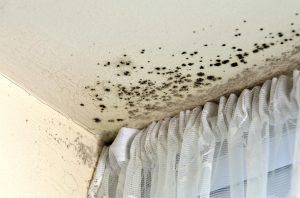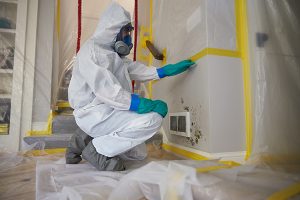Mold is a naturally occurring fungus that grows in wet, damp, moist, or humid areas. When mold forms, it is formed either on a surface or it becomes airborne and travels via inhalable spores. Continued mold inhalation can lead to serious health issues and may require the use of a mold remediation team, both of which can be costly. But that’s not to say mold buildup in your home isn’t preventable! If you understand the basics of mold as a substance and can identify the various signs associated with mold buildup, you’ll be well-equipped to handle mold testing to routinely maintain and properly manage mold buildup in your home. Continue reading for some signs that you may be having a mold issue, tips on how to handle that issue, and some mold testing methods to determine the severity of the issue.
The Difference Between Mold and Mildew
Mildew is a type of mold – it falls under the larger mold umbrella. The main difference between mildew and mold is simple: mildew growth is typically restricted to the topmost surface of an area and can be removed with relative ease. Mold, on the other hand, often burrows itself beneath the surface, making the mold removal process more difficult and more intensive. It should also be noted that mildew is powdery, and mold often appears slimy and fuzzy.
Mold and mildew are often mistaken for dirt. If you begin to see small dark spots on mold-susceptible surfaces in your home, a quick at-home mold testing technique to see if it’s mold or if it’s just dirt is to pour a cup of bleach (an extremely small amount of bleach) and water (approximately 1 part bleach to 16 parts water). Next, take a q-tip, dip it into the solution, and lightly dab away at the spots. If the spot lightens quickly or disappears completely after a few light dabs, it is more than likely mold or mildew.
Detectable Mold in Your Home
It’s very easy to determine if you’re having a mold issue…when you can see it – after all, it’s right there in front of you! Here’s a list of the most common areas where detectable mold occurs:
- Showers
- Bathtubs
- Sinks
- Toilets
- Bathroom walls and ceilings (especially near showers)
- Refrigerators
- Microwaves
Detectable mold is often easy to remove, however we recommend utilizing a mold removal or mold remediation service to have complete confidence in maintaining a mold-free home.
Undetectable Mold Hiding in Your House
Unlike Detectable mold, Undetectable mold is much more difficult to find and requires a more intensive mold testing process. If the Undetectable mold infestation is bad enough, said infestation could also require the usage of a mold remediation or mold removal company. More often than not, Undetectable mold is found under the surface. How will you know if your home is plagued by Undetectable mold? Let’s say, for example, you see a few mold spots on some drywall near your shower. You wipe the surface clean, yet there’s a telltale sign that keeps lingering: the musty smell. If you’ve cleaned the surface area and a musty smell remains, you may have an Undetectable mold infestation.
Here is a list of the most common areas Undetectable mold occurs:
- In ducts (ventilation ducts specifically)
- Beneath drywall
- Behind refrigerators
- Beneath carpeting that has been exposed to flooding
- Beneath ceiling drywall (especially if a leak has occurred)
Petri Dish Mold Testing
If you want to be one hundred percent sure that you have an Undetectable mold issue, we recommend the following airborne mold testing procedure:
- Purchase an at-home mold testing kit. These kits typically sell on Amazon for $25 to $50.00.
- Seal the room you’ll be testing. At least 24 hours before testing, close all the windows and ensure there are no leaks in the seals and weatherstrips. Also be sure to close any and all doors leading into the room.
- Unpack the contents of your at-home mold testing kit and place the un-capped petri dish (hold onto the lid for later usage) on a waste height flat surface inside the room being tested. Leave the dish in the room for 48 hours.
- After 48 hours, retrieve the petri dish from the room, put the lid back on it, seal the lid with a layer of thin tape (scotch tape preferred), and place the petri dish in an area where sunlight cannot get to it (perhaps a desk drawer).
- After 48 more hours, retrieve the petri dish from the dark area. If there was mold present in the room you tested, it will appear in the petri dish.
If you believe you’re experiencing a mold infestation, Detectable or Undetectable, contact ServiceMaster of Aurora for all of your mold testing, mold remediation, and mold removal needs. Service Master of Aurora can be reached at (630) 896-0030 or contact us to schedule a consultation and put your mind at ease.



